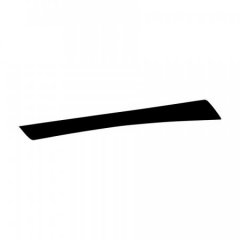
Can you translate my name into Chinese?
Well, can I do it or can most people literate in Chinese do it? I can probably do it, given that your name means something and I can somehow find out. But most people who are literate in Chinese don't know what you're talking about. "Translate a name? Impossible," would be a response from someone unfamiliar with how non-Sinospheric names are usually rendered in Chinese. But you see names "translated" into Chinese everywhere, right? What's all that about? Well first, let's see you do it. You can read English because you're reading this. I'll give you a Chinese name, 曹操, pronounced [t͡sʰɑʊ˧˥ t͡sʰɑʊ˥] (That's IPA, by the way.) in Mandarin, and you translate it into English. "Well, that's easy," you say. "I'll just write it 'Tsau Tsau' and I'm done." No, you're not. Actually you weren't even close to translation. What happened there was transliteration, which attempts to preserve pronunciation across different languages. Translation attempts to preserve meaning across languages. The problem with translating names in many languages is that the meaning of them is well hidden, so much that even those who name others sometimes do not know their meaning. That is exactly what's going on when people offer to "translate" names into Chinese. They usually don't know squat about what your name means. They want to know how it's pronounced so they can transliterate your name into Chinese characters, usually following Standard Mandarin pronunciations. In other words, they pick characters that, when put together, sound like your name, hopefully while not literally saying anything bad.
So what do I mean when I say I can probably translate your name into Chinese? I'm assuming a few things:
- Your name means something
- You can either tell me what it means or I can find out by myself
- At worst I'll give you an accurate translation.
- At best I'll give you a Han-like name that more or less means what your name means.
Most of the following is material I posted in the forums of chinese-forums.com that repeats and should further clarify these concepts.
Translation is the interpreting of the meaning of a text and the subsequent production of an equivalent text, likewise called a "translation," that communicates the same message in another language. Transliteration is the practice of converting a text from one writing system into another in a systematic way. Transliteration is not transcription. Transliteration into Chinese characters is representing the pronunciation of a foreign term or name with Chinese characters that sound similar. Simply put, translation preserves meaning across different languages, and transliteration preserves pronunciation across different languages.
How do you translate a name into Chinese? As the meaning of names is less frequently known, a translator has to get it somehow, perhaps using a proper name dictionary like this and this. After/if they get the meaning, they pick Chinese characters that mean the same thing. Of course, there are often many choices, and good translators are needed to get good characters. If exact matches cannot be found, the translator has to make accommodations. The following is an example of a translation of a name Andrew Perry into Chinese.
"Perry" is derived from Old English pyrige "pear tree" (source). A possible translation of this surname is 杜, which means "pear tree" (王力 et al. (2000).《王力古漢語字典》北京:中華書局). "Andrew" is from the Greek name Ανδρεας (Andreas), which was derived from ανηρ (aner) "man" (genitive ανδρος (andros) "of a man") (source). A possible translation of this given name is 甫, which means "father," a laudatory name for males, among other things (source). Unfortunately for Andrew Perry, 杜甫 is already taken.
How do you transliterate a name into Chinese? The transliterator has to know how the name is pronounced. Then, they choose characters that sound approximately like the name in that particular Chinese language. They might pick characters out of nowhere, or follow a chart like this. Most non-Sinospheric names are rendered as a transliteration. The following is an example of a transliteration of a name Andrew Perry into Chinese.
Following this table, the transliterator might pick 安德魯 for "Andrew," and 佩里 for "Perry." This would be rendered as 安德魯·佩里 in a Chinese text.
Why is someone's translation/transliteration different from someone else's? When exact matches can't be found, translators and transliterators have to make accommodations. Therefore, room for interpretation increases, and therefore, room for variation increases. Also, a lot of people give you a transliteration even if you ask for a translation, because transliterations take fewer resources and brain power, because they think you meant that you wanted a transliteration, because most non-Sinospheric names are rendered as a transliteration, and also because they just don't know the difference.
Quiz:
- What is one possible translation of the name 曹操 into English?
- What is one possible translation of the name Anan Rask into Chinese?
- Read more...
- 2 comments
- 1426 views
